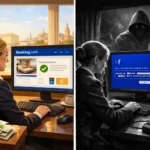A recent Windows update has inadvertently caused widespread issues for users running dual-boot systems with Windows and Linux. This development has significant implications for cybersecurity and highlights the delicate balance between enhancing security measures and maintaining system functionality.
The Root of the Problem: Secure Boot Advanced Targeting (SBAT)
The August “Patch Tuesday” update introduced Secure Boot Advanced Targeting (SBAT), a feature designed to block Linux bootloaders vulnerable to the CVE-2022-2601 exploit. This vulnerability, found in the GRUB2 bootloader, could potentially compromise the security of Windows systems. However, the implementation of SBAT has had unintended consequences for dual-boot setups.
Impact on Dual-Boot Systems
Despite Microsoft’s assurances that SBAT should not affect dual-boot systems, numerous users have reported that their Linux distributions, including Ubuntu, Linux Mint, Zorin OS, and Puppy Linux, fail to boot after installing the August Windows updates. Users are encountering a critical error message: “Verifying shim SBAT data failed: Security Policy Violation. Something has gone seriously wrong: SBAT self-check failed: Security Policy Violation.”
Affected Linux Distributions
While a comprehensive list of affected Linux distributions is not yet available, the issue appears to impact a wide range of systems, particularly those running older versions or ISO images. This situation underscores the importance of keeping all operating systems and bootloaders up-to-date to maintain compatibility with evolving security measures.
Troubleshooting and Temporary Solutions
Users attempting to resolve the issue have found that conventional troubleshooting methods, such as removing SBAT, uninstalling Windows, or restoring Secure Boot to factory settings, are ineffective. Currently, the only known workaround involves a multi-step process:
- Remove SBAT
- Disable Secure Boot
- Install the latest version of the desired Linux distribution
- Re-enable Secure Boot
This solution, while effective, raises concerns about potential security vulnerabilities during the process and highlights the need for a more robust, long-term fix from Microsoft and Linux distributors.
Cybersecurity Implications
This incident illustrates the complex challenges in balancing system security with user functionality. While SBAT aims to protect against known vulnerabilities, its implementation has created new issues for a significant user base. It underscores the need for thorough testing and consideration of diverse system configurations when deploying security updates.
As cybersecurity professionals, we must remain vigilant and adaptable in the face of such challenges. This situation serves as a reminder of the importance of comprehensive testing, clear communication between operating system developers, and the need for rapid response to unintended consequences of security measures. Moving forward, it is crucial for Microsoft to address this issue promptly and for the cybersecurity community to continue monitoring the situation, providing guidance to affected users, and advocating for solutions that enhance security without compromising system functionality.






